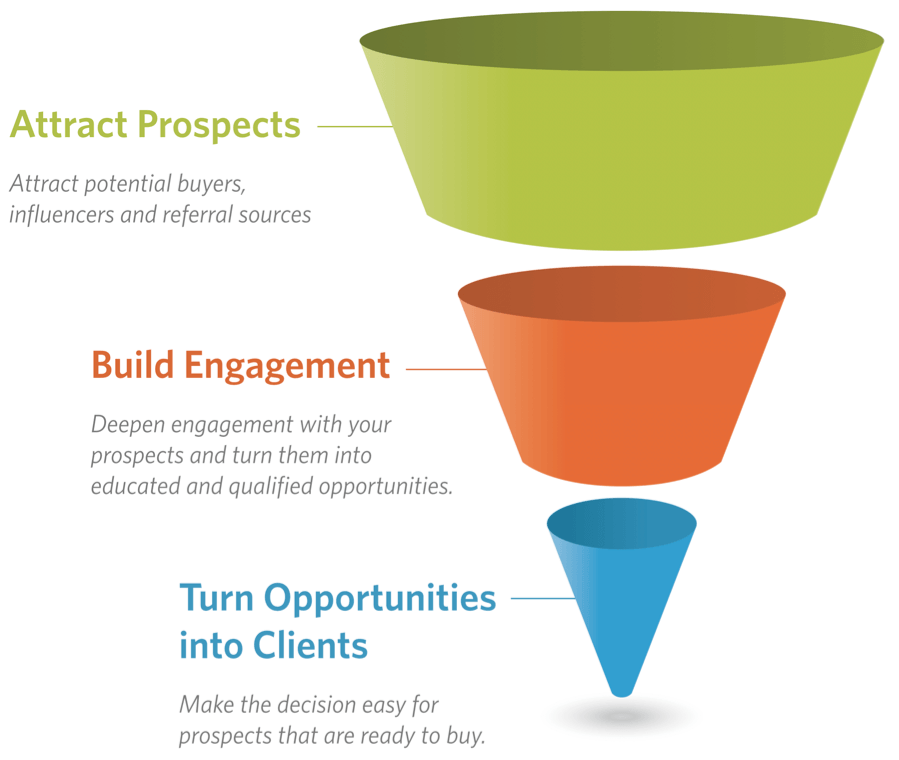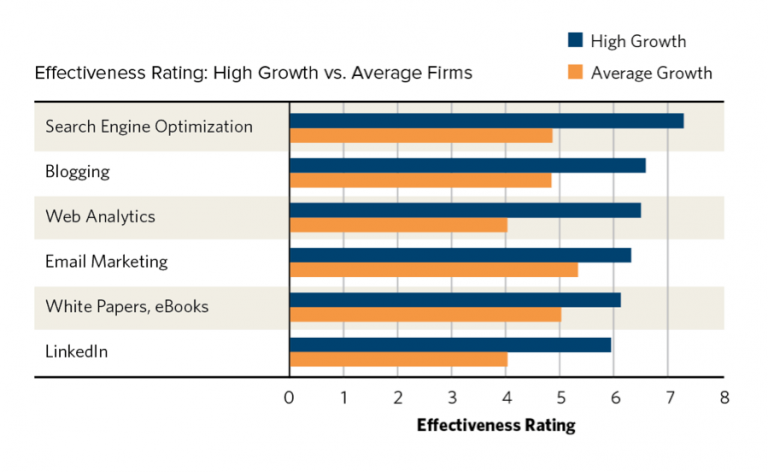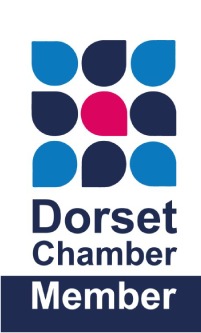The Article: 10 Essential B2B Marketing Strategies
to Grow Your Professional Services Firm
When some firms think of B2B marketing strategies, they think primarily of direct and outbound techniques – messages that you might send straight to clients or prospective buyers that you’ve identified. In this approach, the goal is to be compelling and persuasive enough that the audience responds and engages with your services.
These kinds of techniques certainly have a place in your marketing tool belt. But the world of B2B marketing strategies has expanded, and the behaviour of professional services buyers has changed. Buyers are much more likely to do a Google search to find and evaluate a firm than to check personal references.
This has broadened the range of B2B marketing strategies at your disposal. Today, staying competitive means taking full advantage of a wide spectrum of strategies.
But which ones are essential for success in today’s hyper-competitive environment? Let’s take a look at ten absolutely fundamental B2B marketing strategies that will not only help your firm keep up, but help you get ahead.
1. Research
Research is the bedrock of any modern marketing effort. From marketplace research to brand research, detailed scientific studies will help you make more informed decisions. They’ll give you an objective basis for your marketing and provide you valuable baselines for measuring your results.
By conducting research, you’ll know your clients better — which puts you in a position to serve them better. Market research also gives you insight into how your processes are performing. You’ll know which aspects of your firm are performing most successfully and develop a better understanding of which services you should offer.
The impact of research is clear. Our own studies on the impact of research have shown that firms that conduct systematic research on their prospects and clients grow three to ten times faster and are up to two times more profitable than peers that don’t pursue research.
2. Niche-Driven Strategy
One of your most important business considerations – period – is specialisation and niche targeting. Our research has repeatedly shown that the fastest-growing firms tend to be specialists in a carefully targeted niche. This should be an area of the industry that you understand thoroughly, a space in which you can become an undisputable expert and leader.
Specialization makes all of your marketing efforts easier, because it tends to define exactly what you do and immediately distinguish you from the competition. A specialization is a differentiator that proves itself.
3. A High Performance Website
In today’s professional services marketplace, your firm’s website is one of your most crucial assets. It is much more than a digital billboard or brochure, as some firms believed in the past. A successful website is the hub of a firm’s online presence and an information-rich projection of its expertise into the marketplace.
Your website is a critical tool for building visibility. Potential clients search online to find service providers, and they need to be able to find your firm’s website in order for you to have a chance at winning their business. Plus, your website enables you to demonstrate your firm’s expertise and become well-known throughout the marketplace.
Our research paints a clear picture of the importance of a professional services firm’s website. In fact, 80% of people look at website when checking out service providers – the most commonly used information source by far.
And as new visitors reach your site, robust educational content and carefully targeted offers can drive leads to closer and closer engagements, eventually bringing qualified leads straight to you. This process of nurturing leads through content is illustrated below:

A second component of your website you need to consider is design. Web and graphic design can influence your audience’s perceptions, aid recall, and swiftly and intuitively differentiate a business.
The power of design to engage audiences is often underappreciated — which means it offers a tremendous opportunity to set firms apart and convey the credibility firms needs to thrive.
Finally, another increasingly essential consideration for your website is its usability across a wide range of devices, including mobile. Responsive design, which allows your website to adapt to suit a user’s device, has become a key feature as more people use mobile devices to do business.
4. Search Engine Optimisation (SEO)
As we alluded to in the previous item, your target audience has to be able to find your site for it to be effective. That’s where search engine optimization comes in.
This is such a key piece of the online marketing puzzle that in our studies, high-growth firms list it as the most effective online marketing technique available to them.

Though SEO is a complex and evolving discipline, it ultimately consists of two primary components.
On-site SEO uses targeted keyword phrases to communicate the concepts on your site that matter to your audience. These keyword phrases typically focus on your services and expertise.
The purpose of on-site SEO is to communicate to search engines what your website is about. This allows search engines to produce more relevant results to searchers. And when audiences search for insight on your area of specialty, they’ll find you.
Off-site SEO takes the form of links to your website, either through outside engagement or guest articles in other publications, for example. These efforts work to increase your site’s authority as a widely recognized leader on your topic.
As more high authority and relevant websites link to your website, search engines will begin to see your site as more credible – resulting in higher rankings.
5. Social Media
If you needed any more proof that social media is here to stay for professional services firms, we’ve got you covered. Our research has found that over 60% of buyers check out new service providers on social media, making it a more commonly used source of information than formal referrals and recommendations.
Even the nature of referrals has changed in the wake of social media. A recent study on referral marketing has found that 17% of expertise-based referrals are made on the basis of interactions on social media. Put simply, social media is an accelerator for the reach of your reputation, expertise, and content. It allows you to network and connect with valuable contacts and influencers, as well as monitor your brand by social listening.
6. Advertising
There are a number of platforms on which your firm can advertise effectively:
- Industry publications and websites
- Social media
- Search Engine Marketing (SEM) – Google Ads, as well as Bing and Yahoo
- Retargeting – A cookie-based technology that uses a simple JavaScript code to anonymously “follow” your audience across the Web and serve relevant ads
Advertising doesn’t just promote your services – it can also play an important role in driving content downloads, increasing both your expertise and visibility.
It’s important, however, to use forms of advertising best suited to professional services. LinkedIn, retargeting, and other industry-focused advertising tend to work best, because they allow you to most directly target appropriate industry audiences, which leads to more conversions, higher click-through rates, and lower cost per download.
Search engine marketing (SEM), on the other hand, often can be more expensive and harder to target for professional services’ purposes. Similarly, Facebook ads tend to be less effective because the platform is used at a lower rate by professional services buyers than other social media networks…
However, it’s important to remember there are many variations of each of these advertising types. Professional services firms might find them more or less successful depending on budget, ad purpose, targeting, and industry niche.
7. Referral Marketing
We mentioned that the nature of professional services referrals has changed – and this has major implications for your B2B marketing strategy. Our studies of referral marketing strategies in professional services have revealed an important new facet of the practice – over 81.5% of providers have received a referral from someone who wasn’t a client.
Where do these referrals come from? The vast majority are based on a firm’s reputation for specific expertise.
By using content marketing in conjunction with the rest of the tactics in this list, you can build a brand with a widespread reputation for specialty in your area – and an understanding of your expertise even among audiences that haven’t worked with you directly. This brand recognition can lead to referrals and new business.
8. Marketing Automation, CRM, and Lead Nurturing
Marketing Automation: Marketing automation replaces high-touch, repetitive manual processes with automated ones – supported by technology solutions. It brings together all of your online marketing channels into one centralized system for creating, managing, and measuring programs and campaigns.
As with any technological tool, it’s essential to select the right marketing automation software for your firm. Make sure the size, complexity, and scalability of a prospective solution is a good match for your needs.

CRM: Another essential software is a Customer Relationship Management System (CRM). Many firms use a CRM to track and organize opportunities and client information. In short, a CRM will help you stay organized and connected, no matter how sophisticated your operations grow.
Your CRM serves as the database for all the information you collect about opportunities and clients, including specific interactions with them. The information can be entered, stored, and accessed by employees in different firm departments, synchronizing efforts across your firm.
Lead Nurturing: But CRM isn’t the end of the story. Remember the lead-nurturing content funnel? Your website is one critical piece of that puzzle – and email marketing is another. Targeted, analytics-driven email marketing campaigns allow you to deliver soft and hard offers for specific buyer roles, tailored to a buyer’s particular place in the buying process.
Similarly, drip email campaigns enable you to send more targeted offers to segments of your audience over a set period of time. This builds closer engagement (and educates further) through successive, relevant content and offers.
9. Testing and Optimisation
We started with research, but we’re not finished with our scientific approach. Testing and optimization allow you to iterate your marketing efforts and make ongoing decisions based on hard data rather than intuition.
Just as research is the bedrock of your marketing, testing and optimization is your continuous guide. You should never stop testing your marketing campaigns and adjusting them accordingly. This includes:
A/B testing of emails, landing pages– Using A/B testing tools (like Optimizely or Unbounce), learn which of two emails or landing pages converts users more successfully based in variances of language, design, or other elements.
Email and landing page rendering– Use tools like Email on Acid to test how emails will render on different devices and platforms, ensuring that they look and function as they should.
10. Analytics and Reporting
Similarly, it is critical to analyse the right metrics in order to measure results effectively. You will need tools in place to collect accurate data on all your efforts, from your website to social media to SEO.

Google Analytics is an essential tool for measuring and analysing your site traffic. MOZ can help you study and improve your SEO results, while tools like Hootsuite provide detailed social media analytics.
Analytics and testing help you truly understand what is working and what is not. Embrace them, use them. They will help you turn your marketing efforts from an art form into a science.
A Final Thought
The important thing is not to stand still or grow comfortable. In order to remain competitive, your firm must constantly assess your B2B marketing strategies and find ways to improve.
The online marketing world is evolving at a faster and faster rate, but today, the firms that successfully gather and utilize data on their performance – across a wide range of marketing efforts – are situated to win.
View the original article.







